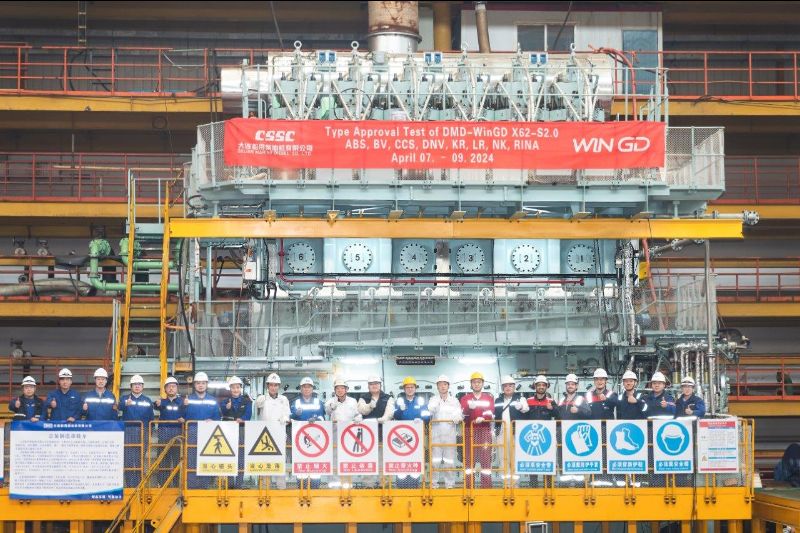
NOAA: Low-Sulfur Fuel Really Does Make a Difference
A new NOAA-led study looked to confirm what the shipping industry and regulators have thought all along; when vessels switch to use low-sulphur fuel, harmful ship emissions are reduced dramatically. Read below for the press release on the study by NOAA.
NOAA – New clean fuel regulations in California and voluntary slowdowns by shipping companies substantially reduce air pollution caused by near-shore ships, according to a new NOAA-led study published online today in Environmental Science & Technology.
The study examined a container ship operating under a 2009 California regulation requiring that ships switch to low-sulfur fuels as they approach the California coast, and also adhering to a voluntary state slowdown policy, intended to reduce pollution. The research team found that emissions of several health-damaging pollutants, including sulfur dioxide and particulate matter, dropped by as much as 90 percent.
Findings of this study could have national and global significance, as new international regulations by the International Maritime Organization require vessels to switch to lower-sulfur fuel near U.S. and international coasts beginning in 2012. The research team found reductions in emissions even where none were expected, meaning even greater reductions in air pollution, and associated respiratory health effects in humans, than regulators originally estimated.
“This study gives us a sense of what to expect in the future, for the people of California, the nation, and even the globe,” said Daniel Lack, chemist with NOAA’s Earth System Research Laboratory and the Cooperative Institute for Research in Environmental Sciences. “This really is where science gets fun – a study with first-rate institutions, equipment and people, probing the effects of policy. It’s important to know that the imposed regulations have the expected impacts. The regulators want to know, the shipping companies want to know, and so do the people.”
In May 2010, a NOAA research aircraft flew over a commercial container ship, Maersk Line’s Margrethe Maersk, about 40 miles off the coast of California. Researchers on the aircraft used sophisticated custom instruments to ‘sniff’ the ship’s emissions before the ship switched to lower-sulfur fuels (by law, within 24 miles of the California coast) and slowed down voluntarily.
A few days later, scientists aboard the NOAA-sponsored Woods Hole Oceanographic Institute’s research vessel Atlantis sampled emissions of the same ship as it cruised slowly within the low-sulfur regulated zone.
Sulfur dioxide levels, which were expected to drop, did do so, plummeting 91 percent from 49 grams of emissions per kilogram of fuel to 4.3 grams. Sulfur dioxide is best known as a precursor to acid rain, but can degrade air quality in other ways, directly and indirectly through chemical reactions in the atmosphere. In particular, emissions of sulfur dioxide lead to formation of particulate matter in the atmosphere which poses serious public health concerns.
Particulate matter pollution, regulated because it can damage people’s lungs and hearts, dropped 90 percent from 3.77 grams of emissions per kg of fuel to 0.39 grams.
Unexpectedly, black carbon levels also dropped, cut by 41 percent, the team reported. Black carbon comprises dark-colored particles that can warm the atmosphere and also degrade air quality.
In 2009, the U.S. Environmental Protection Agency and its Canadian equivalent, Environment Canada, estimated that shifting to low-sulfur fuels near coasts could save as many as 8,300 lives per year in those two countries, and ease the acute respiratory symptoms faced by another 3 million. But that 2009 assessment did not include the observed drops in several pollutant categories that Lack and his colleagues found, so the authors suggest the impacts could be greater.
Finally, the new paper discusses the net radiative (warming vs. cooling) effect of the ship’s fuel switch. Changes in the emissions of various air pollutants – some which have a warming effect, others which have cooling effects – likely mean net warming.
The project was funded by NOAA and the California Air Resources Board and conducted in close collaboration with the Maersk Line.
“These scientific findings clearly demonstrate that ships off our coast now emit significantly less sulfur pollution than in the past,” said California Air Resources Board Chairman Mary D. Nichols. “This is good news for California and for the nation. When the federal regulations kick in for ships to use low-sulfur fuel, communities throughout America that live near shipping lanes and next to ports will see clean air benefits.”
The new paper, Impact of Fuel Quality Regulation and Speed Reductions on Shipping Emissions: Implications for Climate and Air Quality, is available at the Environmental Science & Technology website. Lack’s 28 co-authors are from 10 research institutions from both the U.S. and Canada.
Via NOAA

Subscribe for Daily Maritime Insights
Sign up for gCaptain’s newsletter and never miss an update
— trusted by our 109,081 members

Get The Industry’s Go-To News
Subscribe to gCaptain Daily and stay informed with the latest global maritime and offshore news

 Join The Club
Join The Club








